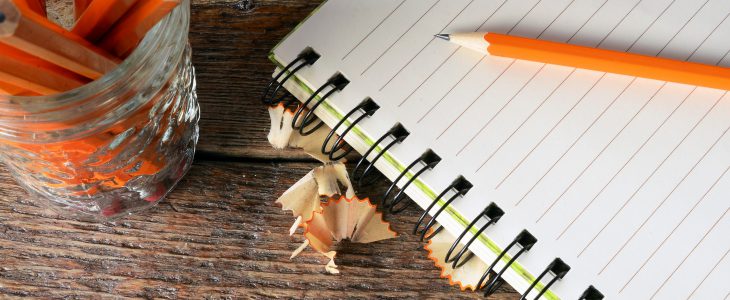
New volunteer tutors can be intimidated by the task of creating a lesson plan for an adult basic literacy student. While the term “lesson plan” seems formal, it is actually a flexible tool to help the tutor organize lessons for the student.
There are two keys to successful lesson planning. The first is that lesson plans should center on the student’s goals. The second is that the lesson plan should meet the student at his current skill level as determined by formal and informal assessments of the student’s reading and writing.
These two keys are then used to determine objectives, create activities and choose materials for the lesson. These will be discussed under new or in-progress work.
In the flow of the lesson plan there are 6 basic components as shown on the Sample Blank Lesson Plan. Tutors may add to it or modify it in any way to make it easier to plan lessons for the student.
Review the homework
It’s important to do this with the student. He has worked hard to complete the assignment. By reviewing it together, it shows that the tutor respects the student’s time and effort.
Review the previous lesson
This refreshes the student’s memory and gives the tutor an opportunity to re-teach forgotten or misunderstood activities. In order for lessons to be stored in long-term memory they must be reviewed several times.
New or in-progress work
This is the core of the lesson plan. I like to think of this as circular process as the objectives, activities and materials influence each other. An objective is a statement of what the student is to achieve. It is measurable. One to three objectives per lesson is reasonable. Activity creation is the time for the tutor to be resourceful and use imaginative employing activities to meet the student’s goals. Activities could be Language Experience Stories, Duet Reading, Story Mapping, Word Slides, Brainstorming, or Editing Punctuation. The possibilities are endless. Materials should be chosen because they relate to the student’s goals. Magazines, the internet and junior nonfiction and fiction are excellent resources. Some important points to remember are:
- Show the relationship between the activity, the objective, and the student’s goal.
- Vary the modalities and multiple intelligences used.
- Let the student have some input or choice in the activity.
- Include real-life materials when possible.
- Include reading, writing, listening, and speaking.
Tutors can also utilize one of the curriculums such as the Laubach Way to Reading Series in this part of the lesson.
Homework is review time
Choose assignments that are similar to ones s/he successfully completed in class.
Ask the student
What did they think about the day’s lesson? What would they enjoy doing next week?
Make tutor notes
Note how the lesson went, and assess the student’s progress to plan for the next lesson.
Last, but not least:
Be flexible. A fabulous lesson plan will not work if your student has other things on his or her mind. You may need to help him fill out an application, read the directions for a new medication or write a letter to his child’s teacher. The lesson plan will be there for next time.
Be efficient. A well thought out lesson plan gives you confidence and allows you to focus on the student during your lesson.
Be positive. Be encouraging yet honest. Acknowledge your student’s success and effort every lesson. Enjoy!

